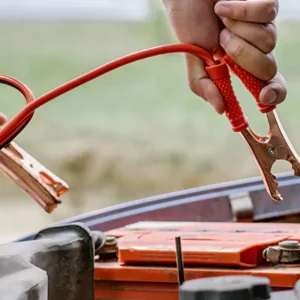Batavia, once a colonial stronghold and now a thriving metropolis, stands as a city that embodies both the rich history of Southeast Asia and the cutting-edge innovations of the modern world. With its dynamic evolution, Batavia has become a shining example of how a city can maintain its cultural heritage while embracing global trends in technology, sustainability, and urban development. Over the centuries, it has transformed from a colonial outpost into a cosmopolitan hub, drawing people from around the world to experience its unique fusion of past and present.
Today, paito batavia kdk 1 hari ini is a bustling urban center, with a vibrant economy, a growing tech scene, and a rich cultural landscape that continues to attract tourists, entrepreneurs, and artists alike. As the city pushes forward into the future, it has become a focal point of urban planning, blending innovation with cultural preservation. In this article, we explore the diverse facets of Batavia’s transformation—its historical significance, architectural beauty, cultural contributions, and the modern innovations that are shaping the city’s future.
A City Built on History: The Foundations of Batavia
Batavia’s history is one of strategic importance, economic prosperity, and cultural exchange. Founded in 1619 by the Dutch East India Company, Batavia became the central hub of the Dutch colonial empire in Asia. Its strategic location made it the gateway for trade between Europe and the East, particularly in valuable commodities like spices, textiles, and tea.
As a result, Batavia became a melting pot of diverse cultures. The city was home to Dutch colonists, Indonesian natives, Chinese traders, and Indian merchants, creating a rich cultural fabric that continues to shape the city’s identity today. While the colonial legacy remains embedded in the city’s architecture and urban structure, Batavia has also evolved into a place of dynamic cultural fusion, where traditions from across the globe intersect and influence one another.
Over time, the Dutch colonial era gave way to Indonesian independence in the mid-20th century. Despite this shift, the imprint of its colonial past remains visible in Batavia’s urban landscape—particularly in the area known as Kota Tua, the city’s old town, which is home to a wealth of colonial-era buildings that have been carefully preserved.
A City of Contrasts: Traditional Architecture Meets Modern Innovation
Batavia’s architectural landscape is a striking contrast between the old and the new. The colonial-era buildings in Kota Tua stand side by side with sleek modern skyscrapers, showcasing the city’s ability to blend traditional and contemporary styles. The old town itself is an iconic example of Batavia’s historical significance, with its wide boulevards, imposing government buildings, and charming Dutch-inspired houses. Among the most notable colonial structures is Fatahillah Square, a former Dutch administrative center, now a cultural hub, complete with museums and art galleries that showcase the city’s colonial past and contemporary artistic expressions.
However, Batavia is far from a city stuck in the past. The city’s modern architectural developments are redefining the skyline. Towering office buildings, luxury hotels, and residential skyscrapers are transforming the city’s skyline, each designed with cutting-edge technology and sustainable practices in mind. As Batavia expands, eco-friendly architecture and green building techniques have become a priority. New developments feature solar panels, energy-efficient systems, and green rooftops, creating urban spaces that minimize environmental impact while maximizing livability.
The challenge—and opportunity—of preserving the city’s historic architecture while embracing new developments is a key focus of Batavia’s urban planning initiatives. The result is a city where old and new coexist in a harmonious and aesthetically compelling way, each element enhancing the other.
Batavia’s Global Connectivity: A Hub for Trade, Technology, and Talent
Batavia’s strategic location has always made it a center for global trade, but in recent decades, the city has diversified its economic base, embracing new industries and positioning itself as a leader in the global economy.
The city has increasingly become a hub for technology and innovation, driven by a growing startup ecosystem and its role as a digital gateway in Southeast Asia. The rise of digital platforms, e-commerce, and fintech companies has reshaped Batavia’s economy. The city is home to a growing number of tech startups and venture capital firms, contributing to its reputation as a tech city in Southeast Asia.
The local government has invested in building the infrastructure and regulatory environment necessary to support innovation. Batavia’s thriving tech scene is supported by accelerators, incubators, and co-working spaces, making it a magnet for entrepreneurs and digital nomads looking to establish a presence in Asia. As a result, Batavia is increasingly seen as a launchpad for digital businesses, offering access to a large, youthful, and tech-savvy population as well as key markets in the region.
Batavia’s status as a global trade hub continues to be a critical part of its identity. The Port of Batavia, one of the busiest in Southeast Asia, serves as a key maritime gateway for goods traveling between the Pacific and Indian Oceans. This connectivity facilitates trade with countries across Asia, the Middle East, and Europe, further cementing Batavia’s place in the global economy.
Cultural Renaissance: The Arts, Cuisine, and Heritage of Batavia
While Batavia is rapidly becoming known for its modern industries, the city remains deeply committed to its cultural heritage. The city’s vibrant arts scene draws inspiration from its rich historical background, blending traditional Indonesian forms with contemporary art, music, and design.
One of the most celebrated cultural expressions in Batavia is its traditional performing arts, including wayang kulit (shadow puppetry) and gamelan (traditional Javanese music). These ancient forms of entertainment remain a cornerstone of Batavia’s cultural identity, with performances regularly taking place in public spaces, cultural centers, and temples. The Jakarta Arts Council and other local institutions support a thriving creative community that keeps these traditional practices alive while pushing boundaries through innovative interpretations.
At the same time, Batavia is emerging as a center for contemporary art, with a growing number of galleries, museums, and independent spaces dedicated to showcasing modern and experimental works. Local and international artists are drawn to Batavia’s vibrant, diverse atmosphere, creating a dynamic artistic scene that is increasingly recognized on the global stage.
Batavia’s culinary scene is another reflection of the city’s rich cultural heritage. As a melting pot of ethnicities, the city offers a remarkable array of food, from traditional Betawi dishes such as soto Betawi (beef soup) and kerak telor (a crispy rice omelet) to international flavors influenced by its Chinese, Indian, and Dutch communities. Street food plays a significant role in Batavia’s culinary identity, and the city’s bustling night markets are an essential part of the local experience. These markets offer everything from skewered meats to fresh seafood, showcasing the city’s diverse and ever-evolving food culture.
The Future of Batavia: Sustainability, Smart City Development, and Global Ambitions
Batavia’s future lies in its ability to combine innovation with sustainability. The city has already taken significant strides in embracing smart city technologies, incorporating solutions such as smart traffic management systems, digital healthcare services, and sustainable energy practices. These initiatives are designed to make Batavia a more efficient, livable, and environmentally friendly place for its growing population.
In addition to its tech-driven transformation, Batavia is also committed to becoming a green city. The integration of green spaces, eco-friendly public transportation options, and sustainable urban planning is part of the city’s broader vision to create a future where economic growth and environmental stewardship go hand in hand.
Batavia’s global ambitions are reflected in its focus on international connectivity. The city continues to invest in infrastructure projects, such as the expansion of its airport and port facilities, to maintain its competitive edge as a major economic center in Southeast Asia. Batavia’s role as a global city is also reinforced by its position as a cultural and business hub, attracting international talent, investment, and tourism.
Conclusion: A City of Endless Possibilities
Batavia is a city that has seamlessly woven together its historical roots with modern aspirations. Its ability to balance heritage with innovation has made it one of the most dynamic and forward-thinking cities in Southeast Asia. From its colonial architecture to its thriving tech scene, Batavia is a city of contrasts, where the past and present coalesce to create a unique urban experience. As it continues to evolve, Batavia is poised to be a model for future cities, one that embraces technology, sustainability, and cultural preservation in equal measure.



